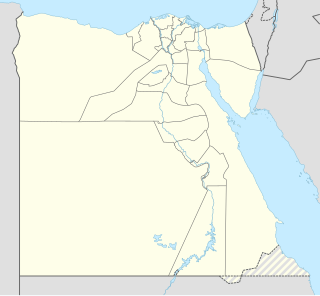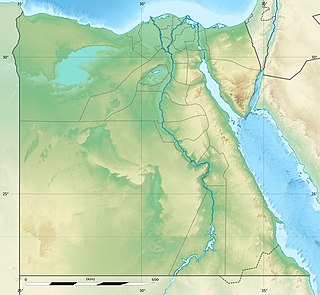 W
WThe Acropole Tomb was excavated on 6 February 1901 by Jacques de Morgan on the so called acropolis in Susa. The Achaemenide burial was found intact and contained a high number of personal adornments, many of then made in gold. The burial dates around 350 to 332 BC. Most of the objects are now on display in the Louvre in Paris. It is one of the most important Achaemenide treasures ever found.
 W
WAr Raqāqinah, is a settlement in the New Valley Governorate of Egypt, approximately 30 km south of Sohag. It is next to Sohag International Airport and is the location of an ancient necropolis.
 W
WBawit is an archaeological site located 80 kilometres (50 mi) north of Asyut, near the village of Dashlout, in Egypt. It covers an area of 40 hectares, and houses a cemetery and the ruins of the Hermopolite monastery of Apa Apollo founded by Apollo in the late fourth century. The structures on this site are relatively well preserved, and demonstrate different aspects of a monastic complex of Middle Egypt.
 W
WThe Code of Hammurabi is a Babylonian legal text composed c. 1755–1750 BC. It is the longest, best-organised, and best-preserved legal text from the ancient Near East. It is written in the Old Babylonian dialect of Akkadian, purportedly by Hammurabi, sixth king of the First Dynasty of Babylon. The primary copy of the text is inscribed on a basalt or diorite stele 2.25 m tall. The stele was discovered in 1901, at the site of Susa in present-day Iran, where it had been taken as plunder six hundred years after its creation. The text itself was copied and studied by Mesopotamian scribes for over a millennium. The stele now resides in the Louvre Museum.
 W
WEl-Amrah is a site about 120 km (75 mi) south of Badari, Upper Egypt.
 W
WGrimaldi man is the name formerly given to two human skeletons of the Upper Paleolithic discovered in Italy in 1901. The remains are now recognized as representing two individuals, and are dated to ca. 26,000 to 22,000 years ago and classified as part of the wider European early modern humans population of the late Aurignacian to early Gravettian.
 W
WKV44 is an ancient Egyptian tomb located in the Valley of the Kings, Egypt. It was discovered and excavated by Howard Carter in 1901 and was re-examined in the 1991 by Donald P. Ryan. The single chamber accessed by a shaft contained three intact Twenty-second Dynasty burials; the remains of seven mummies from the original interment were found within the fill. The original cutting of the tomb is dated to the Eighteenth Dynasty.
 W
WThe Namara inscription is a 4th century inscription in the Arabic language, making it one of the earliest. It has also been interpreted as a late version of the Nabataean Arabic language in its transition to Arabic. It has been described by Irfan Shahid as "the most important Arabic inscription of pre-Islamic times" and by Kees Versteegh as "the most famous Arabic inscription". It is also an important source for the relationships between the Romans and the Arabs in that period.
 W
WThe Prince of the Lilies, or the Lily Prince or Priest-King Fresco, is a celebrated Minoan painting excavated in pieces from the palace of Knossos, capital of the Bronze Age Minoan civilization on the Greek island of Crete. The mostly reconstructed original is now in the Heraklion Archaeological Museum (AMH), with a replica version at the palace which includes flowers in the background.